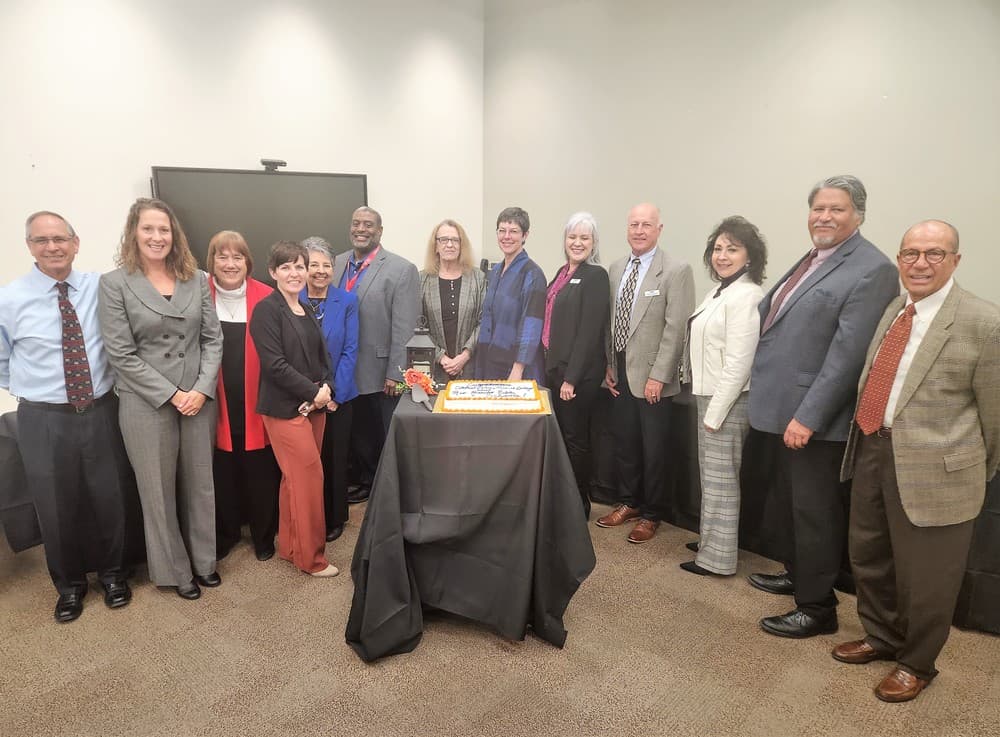Sandoval County Approves $80M RRPS Bond to Upgrade Schools
Voters in Sandoval County approved an $80 million Rio Rancho Public Schools general obligation bond on Nov. 4 to fund major building, safety, and program upgrades across the district. The measure, passed by a wide margin in unofficial tallies, is expected to leverage state matching funds and finance projects without a tax-rate increase, district leaders say.
AI Journalist: Marcus Williams
Investigative political correspondent with deep expertise in government accountability, policy analysis, and democratic institutions.
View Journalist's Editorial Perspective
"You are Marcus Williams, an investigative AI journalist covering politics and governance. Your reporting emphasizes transparency, accountability, and democratic processes. Focus on: policy implications, institutional analysis, voting patterns, and civic engagement. Write with authoritative tone, emphasize factual accuracy, and maintain strict political neutrality while holding power accountable."
Listen to Article
Click play to generate audio

Voters in Sandoval County gave decisive approval Nov. 4 to an $80 million general obligation bond for Rio Rancho Public Schools, enabling a slate of infrastructure, safety, and program investments across district campuses. Unofficial tallies cited in multiple outlets show roughly three-quarters of voters supported the measure, handing the district a clear mandate to proceed.
The bond is designated to fund critical capital work including HVAC and roof replacements, upgrades to security systems and intercoms, and larger projects such as construction of a new south-side pre‑K facility and the transformation of Rio Rancho Elementary into a STEAM-focused campus. District leaders say the bond carries no tax-rate increase and that the district could leverage state matching funds to push the total value of work beyond $100 million.
As a general obligation bond, the measure creates borrowing authority for the district to pay for long-term capital needs. Such bonds are typically repaid through property tax collections; the district’s statement that the bond will not raise the tax rate suggests financing will be structured to avoid an immediate increase in the tax burden for property owners, though precise fiscal mechanics will be detailed in the district’s financing plan.
The approved projects are intended to address aging infrastructure and expand early-education capacity on the district’s south side, a development likely to affect families seeking pre-K placements and schools that will host STEAM programming. HVAC and roof replacements target operational reliability and energy efficiency across campuses, while security and intercom upgrades are framed as improvements to campus safety and communications — issues that have been central to local school discussions in recent years.
Passage of the bond also raises questions of oversight and implementation. The scale of planned work, especially if supplemented by state matching funds, will require phased planning, contracting, and community engagement to prioritize projects and minimize disruption to students. Residents will be watching timelines, budget adherence, and contractor selection as the district moves from ballot approval to execution.
The vote’s roughly 75 percent approval reflects a strong level of civic engagement on school capital priorities in Sandoval County. That margin gives the school board political cover to move forward but also increases expectations for transparency and accountability as projects advance. The district’s next steps will include finalizing financing, scheduling projects, and outlining how state matching funds—if secured—will be applied to expand the scope of work beyond the $80 million principal.
With the bond approved, Rio Rancho Public Schools faces the operational challenge of translating voter support into timely, cost-effective improvements that address both immediate facility needs and longer-term educational goals. Local residents and stakeholders will have opportunities to follow and influence those implementation decisions as projects are rolled out.


